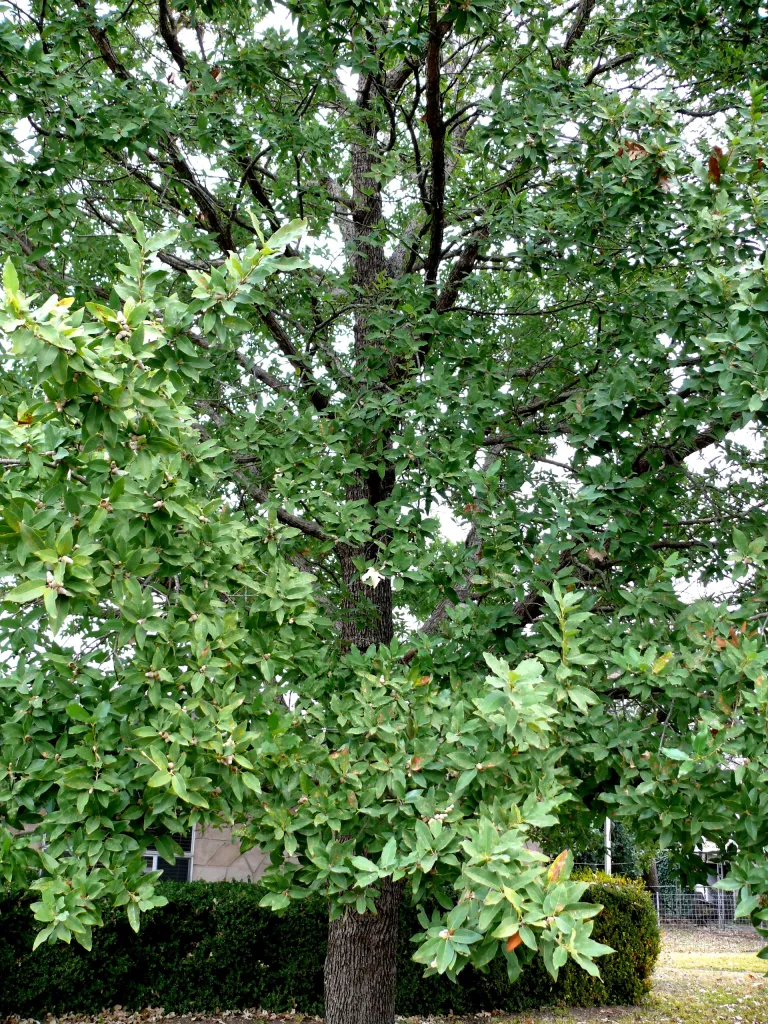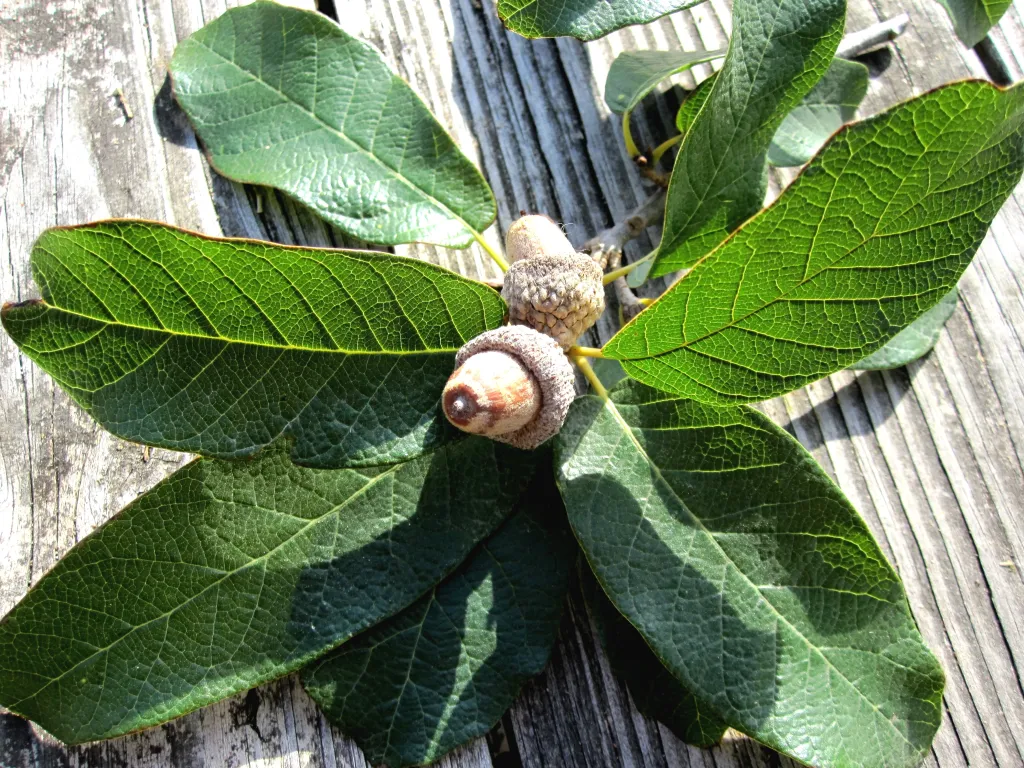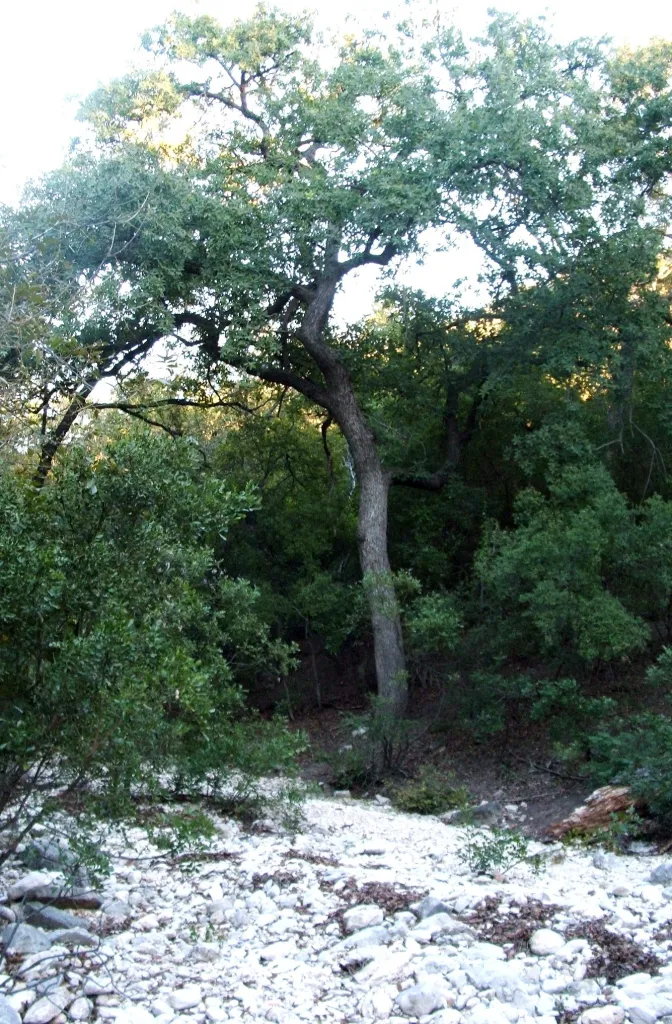Author: Bill Ward
Many of us with a predominance of live oaks in our yards are realizing that a greater diversity of trees is highly desirable in the face of the continuing spread of “oak wilt,” which mostly attacks live oak and red oak. During 2011, Operation NICE! (Natives Instead of the Common Exotics!) will promote a variety of landscape trees, as well as some shade-loving plants which can grow under them.

The NICE! Plant of the Month for January is Mexican white oak or “Monterrey oak” (Quercus polymorpha). This medium to large semi-evergreen tree does well in this part of the Hill Country. It is increasingly the oak of choice for local landscaping. Once established, Mexican white oak probably is as drought-tolerant as live oak. Ordinarily, oak wilt does not affect white oaks.
Mexican white oak has rough bark, oblong leaves 3-5 inches long, and medium-size acorns. Apparently it is cold-tolerant in this area, but the small trees in our yard show leaf damage in very cold weather. Some strains of this species are deciduous in our climate, but the nursery trade apparently has selectively bred for the evergreen trait.
This oak can be fairly fast growing in Boerne yards. Suzanne Young’s Mexican white oak grew from a small switch to about 20 feet high in eight years. According to Chuck Janzow, the “absolute best” large Mexican white oak in Boerne was planted near the intersection of Saunders and Rosewood streets just 23 years ago.

In 1995 the late horticulturist Lynn Lowrey wrote, “Quercus polymorpha could almost be considered a native Texas tree. It grows in Mexico in the Sierra Madre Oriental, in a swath cutting south from about 90 miles southwest of Laredo, TX, to past Ciudad Victoria, Mexico. Acorns were first collected south of Monterrey, Mexico, in 1970, and now trees planted in Houston and San Antonio are quite large.”
Mexican white oak or Monterrey oak will not be found in books on Texas plants written more than 10 or 15 years ago, because this oak was first found in Texas less than 20 years ago. In her book “How to Grow Native Plants of Texas and the Southwest,” Jill Nokes tells the story of its discovery.

“In the early 1990s the Texas Nature Conservancy was surveying some land along the Devil’s River near Dolan Falls in Val Verde County when they discovered a very small isolated box canyon with deep silty gravel deposits supporting several gnarled, spreading oaks that looked somewhat like evergreen post oaks. They asked Benny Simpson to identify them. He went to take a look with John Mac Carpenter, and they were stumped as well. They pressed some specimens and sent the information off to an oak expert, who then identified these few trees as the northernmost population of Q. polymorpha.” This is only known spot in Texas or the U.S. where this species of oak grows naturally.
We were lucky enough to visit that site on the Devil’s River a couple of Octobers ago as guests of Texas Nature Conservancy’s Bill Carr. In the late-afternoon light the little grove of old Mexican white oaks seemed an enchanting place, made all the more intriguing by the migrating monarch butterflies clustering to spend the night in those branches.
Mexican white oak is readily available in local nurseries under the name “Monterrey oak.” That name supposedly was trademarked by Lone Star Growers of San Antonio, according to Howard Garrett in his book “Texas Trees.”
The Boerne Chapter of the Native Plant Society of Texas provides planting and care instructions for Mexican white oak (Monterrey oak) on its website (www.www.npsot.org/boerne).


